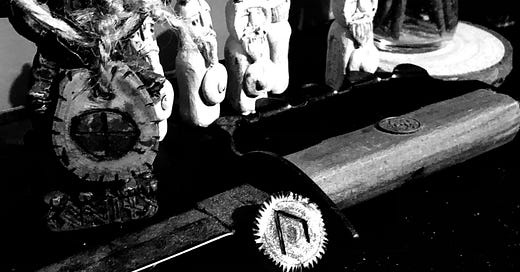Further Analysis of the Ur(uz) Rune
Uruz / Ur / Uraz
(oo-roos)
U
Ur relates to a great, terrestrial, and primordial power inherent within living matter. This is seen in the proto-Germanic word Uruz meaning “aurochs” (Ur-Ox). We also find this root in the Latin word Ursus for “bear” and likewise in Urus for “aurochs.” Additionally, we have the proto-Indo-Iranian úštras which means “camel” or “bull,” two hearty and robust animals of their time and culture. Ur represents a current of ancient energy, potency, and power within the cosmos.
The word úr in Old Norse meant “out of” or “from.” This rune can thus be associated with Ginnungagap; the vast emptiness or “yawning gap” before the ancient collision of fire and ice. Ur is this power that came forth, one that is represented by robust, strong, and powerful animals. The sound carried in this rune embodies a deep and reverberating power; waiting to be used for creation, exertion, or destruction of that which we Will.
Ur(uz) has also been called “hay’s destroyer, slag, and rainstorms.” The first connection I see when viewing these terms within our current framework is the concept of “slag” or “dross.” This is the waste product created when smithing. This brings one back to the Ginnungagap, where essentially, through intense heat and pressure, a massive product (which one can assume is a form of waste) emerged in the form of the universe. Ur is the waste product of creation, a remnant impurity of chaos within an otherwise structured realm of order. We find this concept still in the modern English word urine, denoting an animal waste product, and in urinal, the place we expel this waste. In theory, this could associate all matter with the concept of rubbish, or rather, exhaust from the foundry of nothingness.



